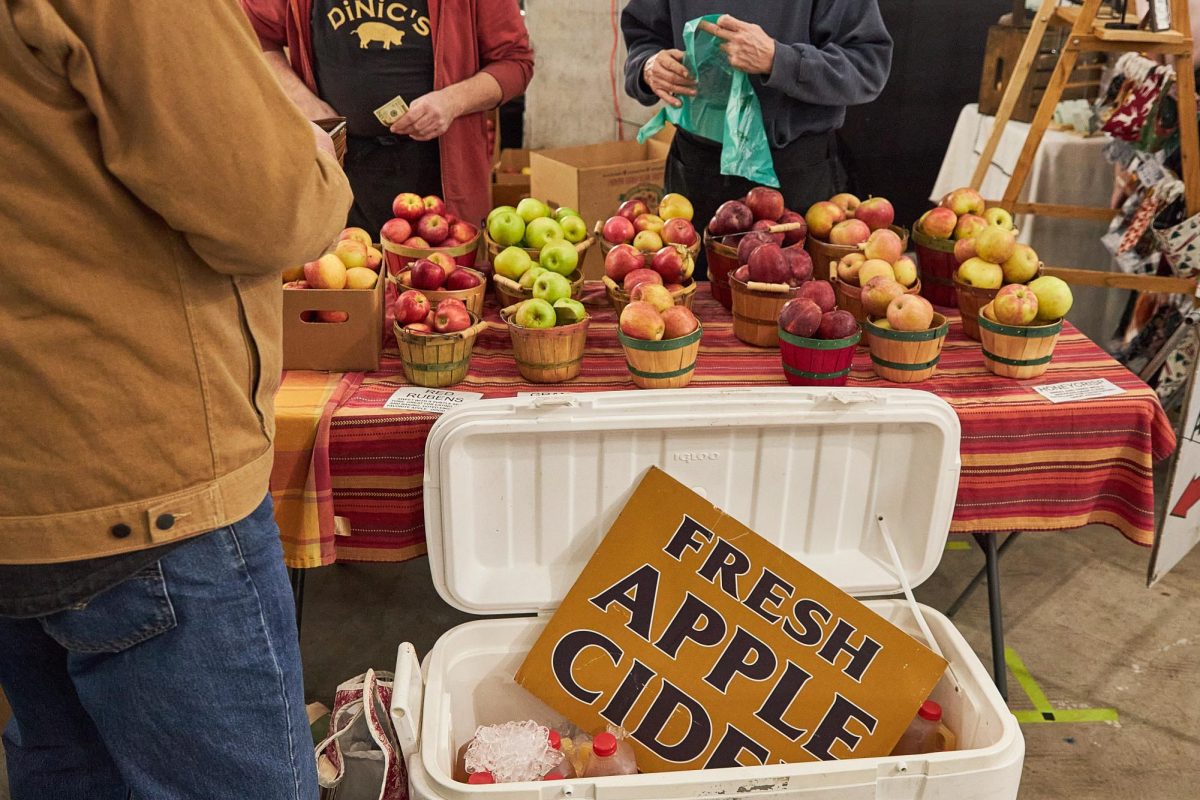The downtown farmers market is a place in downtown Salt Lake City where people can gather to socialize and buy local goods. The market has been around for over 30 years and serves tens of thousands of Utahns.
The market first came to be back in 1992, and was started by the Downtown Alliance.
The Winter Farmer’s Market has opened for the season. This year, the event has moved to a new location, now housed at the Gateway.
The winter market runs every Saturday through April 20, apart from the two weeks that span from Christmas to New Year’s. The market features local vendors selling produce, meat, baked goods and much more. The weekly event also showcases art and craft vendors.
Carly Gillespie, deputy director at Urban Food Connections of Utah, has a direct hand in the recent evolutions of the market, especially when it comes to the new location.
Before entering her current position, she was a seller at the farmer’s market, as the owner of Backyard Urban Gardens Farm.
She said that due to contracts expiring in the previous winter market home, she and her team needed to find a new location for the market, which ended up being the Gateway.
Gillespie added that despite having to move the winter market several times, it has not stunted the growth.
“Our old executive director would always say … ‘You kill a market if you move it’, and we have now moved three times, four times in the past few years,” she said. “And the market has only grown, so obviously we’re lucky.”
Gillespie said the winter market averages about 2,000 visitors weekly.
Joaquim Hailer is a vendor at the summer and winter market, and has been doing so for four years now. He runs a small family farm located in Draper, called Fine Tilth Farm.
As a vendor, he sells crops that he knows have a quick turnover, to make the most of the small amount of land he has, which is just under an acre.
Hailer says he only has one full time employee in the summer, and he and his family do the rest.
He became a vendor at the farmer’s market after the pandemic pushed him to expand.
“I had a farm stand in the front of my house and that just kind of grew into markets,” he said. “Right, because people who want to buy vegetables, that’s where they go.”
Gillespie said that farmers have been really creative to extend their growing season into the winter.
“We have some farmers who have done really innovative growing techniques,” she said. “We have a lettuce grower that grows in a shipping container hydroponically. And so there’s all of these different ways that folks have been able to extend their season.”
Not all farmers are trying new methods — some are just cracking down on more hardy crops that can last through the winter.
“We even have some farmers that are just growing a lot more storage crops, so winter squash, root vegetables, things like that,” Gillespie said.
While the summer farmer’s market is by far the most busy, the winter market has been growing in the ten years it has been in operation.
Statistics from a vendor survey Gillespie conducted showed over a 90% increase in self-reported sales from the 2021 t0 2023 winter seasons.
Hailer urges people to check out the market if they haven’t already.
“All the reasons to go to the farmers market like supporting local growers, supporting local businesses, keeping money in the community instead, instead of sending it off to Walmart or whatever,” he said. “It’s the healthiest, the freshest, the best variety — and you get to talk to people.”




